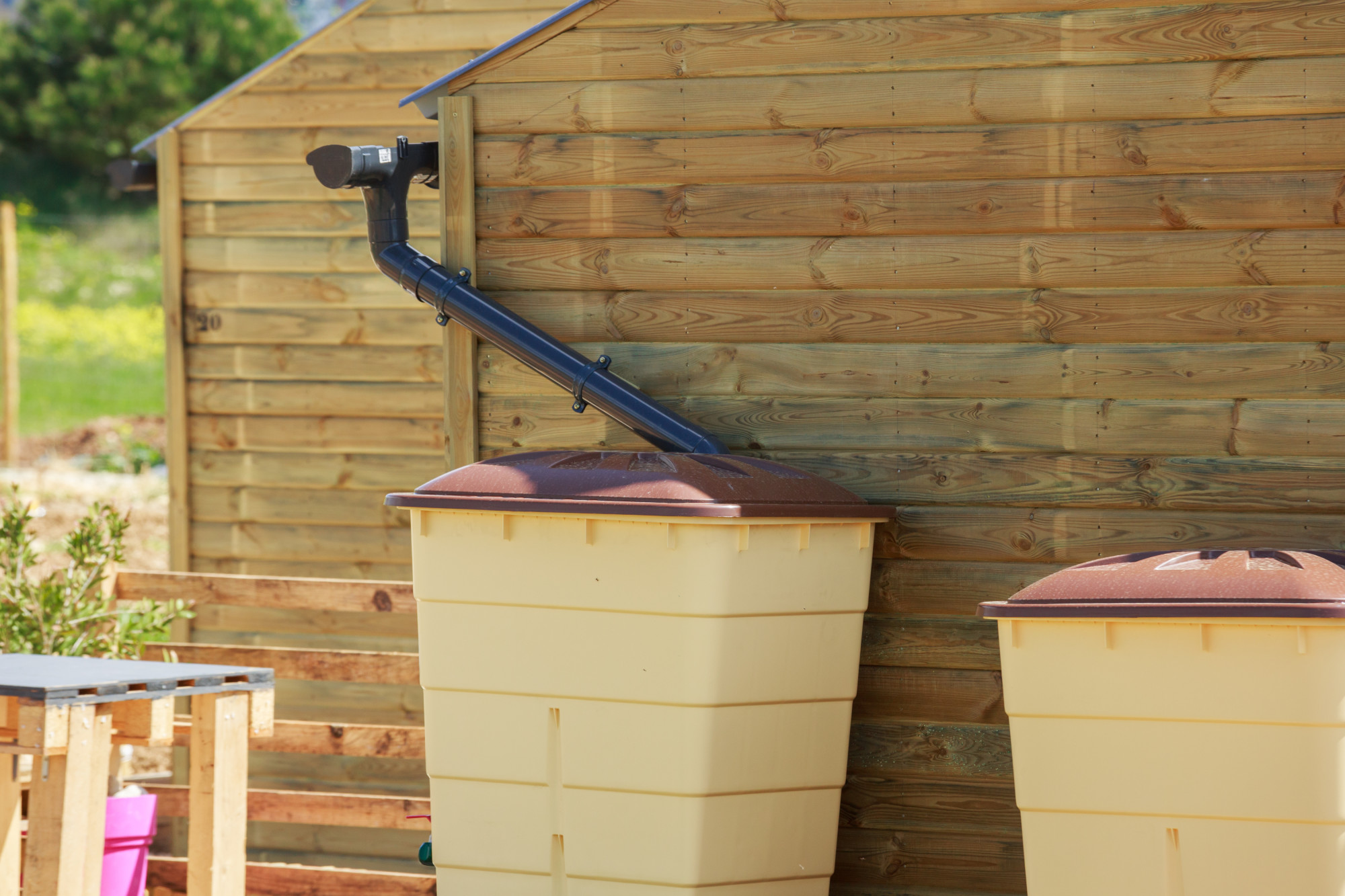Implementing a rainwater collection for your home will do more than just benefit your family and pocketbook. Collecting water also has a positive environmental impact, making use of groundwater and reusing that instead of overconsuming freshwater resources.
According to the US Geological Survey, the average American uses 80-100 gallons of water each day! This is all for indoor uses, the largest consumer is flushing the toilet, next to showers, baths, and laundry.
Water consumption is so outrageous that many local governments are now creating laws that restrict faucets from using too much water.
So how can you set up and use a rainwater collection so that it is saving you money, and helping the environment by using less water?
Thankfully, we did that research for you! All you have to do is keep on reading to learn how to implement a rainwater collection for your house and start reaping the benefits.
What Are the Benefits of Collecting Rainwater?
There are countless benefits to implementing a rainwater collection around your house, both of which benefit you, your family, and the environment.
- Reduces stormwater runoff near homes and businesses
- It can be used in emergencies such as natural disasters
- Reduces the chances of flooding around your home
- Environmentally responsible
- Helps to conserve water and increases self-sufficiency
- Solves drainage problems on your property
- Inexpensive and easy to maintain
- Gives you full control over your water supply, with less dependency on the government and water restrictions
- It is a free source of water and usually very clean
- The system can be moved around the property
- Better for plants and gardens because it is not chlorinated, which is in most tap water
- Ideal for those who have livestock, reducing the water usage for animal care
These are just some of the wonderful benefits of collecting rainwater on your property, especially for emergency purposes. When a natural disaster hits, there will be very limited water resources available. You can protect your family in the case of an emergency with these essentials.
Now let’s get into how you can get started with collecting rainwater yourself.
Is Rainwater Safe?
Rainwater is generally safe, yes. However, there are some chances that it can become contaminated from chemicals in your roof, bird poop, dead bugs, or anything that can come in contact with the water as it runs off towards the storage container.
There are many instructions available online for you to create a first flush diverter, which is a mechanical device that will help to remove a big portion of the gunk and debris buildup in your rainwater.
If you are going to consume your rainwater collection, make sure that you cleanse and purify the water first. It is recommended that you do not DIY your filtration system because of the size of the microbe you are aiming to remove. There are many filtration systems available at an affordable price that can effectively remove the waterborne protozoa and bacteria.
We also suggest that you do a major cleaning once in a while to remove the organic buildup on your roof. By following the above steps, you can be assured that you used the best possible steps to have the safest, cleanest water.
Equipment You Will Need For Collecting Rainwater
Rainwater collection is more than just placing a barrel outside, hoping that you collected enough water to do your laundry. It involves many different parts and conscious decisions on which materials you use to put it together.
Catchment Area
Your roof is the most obvious catchment area, it has the largest surface area on your property and does not need to utilize the water itself. Setting up a system that will collect the rainwater runoff from your roof will have the best result.
This could also be the roof of your shed, carport, chicken coop, pickup truck, barn, or anything else that has a large surface area.
The most important thing to consider is the type of material that is in contact with the rainwater. Some roofing materials such as shingles have a lot of chemicals that will come in contact and contaminate the water. Choose roofing materials that are made out of metal for a more ecologically friendly and safer rainwater collection.
Rain Barrels
Rain barrels are a simple way to collect rainwater. Find a 50 to 100-gallon barrel and place it under your gutter runoff to collect the rainwater from your roof. Rain barrels do not take up much space and are a great start for those who want to see how much water they can collect.
Wet Collection System
A wet rainwater collection system is quite advanced to set up, however, it has the most return in investment. Using PVC piping, you can create an underwater collection system which collects the downspouts from multiple gutters. Once the underground piping fills up, it will create a pressure which fills up a tank located on your property.
For this to work, the elevation of the tank must be below the lowest point of the gutters on your property. The higher the gutter, the higher your tank can be.
Dry Collection System
The dry system involves a large tank that is located underneath the gutters of your house. The pipe that collects the water will dry after each collection because it dumps directly into the large barrel. This system is similar to the rain barrel system, but it allows for more water storage.
Learn More About Starting Your Rainwater Collection System
There you have it! You can now get started on creating your rainwater collection system and reap the rewards for both you and your family. There are many different systems for collecting rainwater, and it all comes down to how much time and money you want to invest in the creation of it.
If you found this article helpful, please check out the many other useful articles like this in the home section of our blog.

